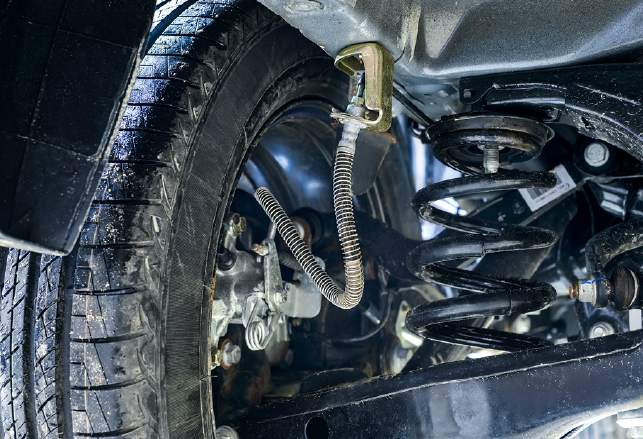When it comes to safe driving, your vehicle’s braking system is one of the most critical components. While brake pads and rotors get most of the attention, brake hoses play an equally important role in keeping your brakes responsive and functional. These flexible hoses carry brake fluid from your master cylinder to the calipers and wheel cylinders. If a hose fails, your entire brake system could lose pressure—making it difficult or even impossible to stop. Knowing how to identify the warning signs of a worn brake hose and when to replace it can help you avoid dangerous situations on the road.
What Is A Worn Brake Hose?
Brake hoses are typically made of rubber or braided stainless steel and are designed to handle high pressure. Over time, these hoses can crack, swell, or develop internal leaks. One of the first symptoms of a failing hose is a “soft” brake pedal—where the pedal feels spongy or sinks to the floor when pressed. This occurs because air or fluid loss within the hose disrupts the hydraulic pressure needed to activate the brakes.
You might also notice your vehicle pulling to one side while braking. This could be caused by one hose restricting fluid flow more than the others, creating uneven brake application. In more advanced cases, a damaged hose can leak brake fluid visibly onto the wheel well or ground. If you see any oily residue near the brake lines or wheels, it’s time to inspect your brake hose.
Another red flag is visible wear on the outside of the hose. Check for surface cracks, bulges, or signs of dry rot. Any visible damage means the hose is compromised and should be replaced immediately. Brake hoses are wear items, just like pads and rotors, and should be checked regularly—especially on older vehicles or those driven in extreme climates.
Replacing a worn brake hose isn’t overly complicated if you’re comfortable working on your car’s braking system. First, safely jack up and secure the vehicle. Then, locate the hose, remove the old fittings, and replace the hose with a new one rated for your specific make and model. Always use fresh brake fluid, and be sure to bleed the system to remove any trapped air that could affect performance.
Additional Common Brake Problems
A worn brake hose isn’t the only component that can compromise your braking system. Another part to keep an eye on is the brake sensor. Many modern vehicles use brake pad wear sensors to notify you when your pads are low. If the sensor fails or becomes damaged, you may not receive a warning before your pads wear down completely, potentially leading to rotor damage or longer stopping distances.
Brake fluid also plays a vital role in system performance. If you’ve recently topped off or replaced your fluid, make sure the brake fluid cap is secured tightly and free of damage. A loose or cracked cap can allow moisture and contaminants to enter the brake fluid reservoir, leading to decreased braking performance and internal corrosion over time.
Other signs of brake trouble include grinding noises (often from metal-on-metal contact when pads are worn), a pulsing brake pedal (usually caused by warped rotors), and vibration in the steering wheel during braking. All of these issues can affect safety and should be addressed promptly.
Prevention is key. Perform regular visual inspections and listen for new or unusual sounds during braking. Check your brake fluid level at least once a month and replace it every 2–3 years to prevent moisture buildup. Inspect hoses, pads, and rotors every 12,000–15,000 miles or during routine maintenance tasks like tire rotations.
If you’re ever in doubt about your braking system’s condition, don’t take chances. Whether you’re replacing hoses, sensors, or fluid caps, using the correct parts and installing them properly can make a significant difference in how your car handles daily driving and emergency stops.
For More Information Visit Techreels








